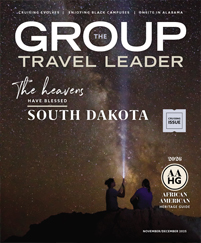
Courtesy City Center
When it opened last month in the middle of the Las Vegas strip, the massive new CityCenter development attracted a flurry of media attention for its staggering size, its high-end amenities and the huge investment it represents in the midst of an uncertain economy.
What you may not have heard about, though, is the complex’s achievements in environmentally friendly design: The four hotels, additional residential tower and shopping arcade have been awarded six Leadership in Energy and Environmental Design (LEED) gold-level certifications from the U.S. Green Building Council.
Observers of the green building movement have been aware of LEED certification program for years. But as environmental awareness continues to catch on in the tourism and hospitality industries, the LEED label is increasingly being applied to hotels, convention centers, museums and other tourism-related properties. It’s an encouraging trend, but one that also leads to an obvious question about LEED — what, exactly, is it?
Recognizing leadership
LEED is a green building rating system introduced by the U.S. Green Building Council in 2000.
“LEED stands for Leadership in Energy and Environmental Design,” said Marie Coleman, communications associate with the U.S. Green Building Council. “It was the first rating system that really addressed all of the areas that a building would need to upgrade in order for that building to be energy efficient. It started as a program for certifying new constructions, but now it’s grown to address different types of building and renovation projects.”
There are four levels of LEED certification — a basic level, plus silver, gold and platinum certifications, which represent higher levels of environmental efficiency. Projects earn points toward certification by meeting criteria in any of six categories, which include water efficiency, energy and atmosphere, indoor environmental quality and innovation in design.
Building owners interested in achieving LEED status often involve LEED-accredited designers, architects and contractors in the earliest stages of their projects and determine which of the numerous sustainability criteria are most attainable.
“Your project team decides what level to attempt,” Coleman said. “The certification level that people go for depends on what the project can achieve and how much they feel like they can invest in it. If a project really wants to go for indoor environmental quality, for example, they may put a lot of effort into earning points in that category.”
During the construction process, building owners submit a number of online forms to the Green Building Council verifying the different LEED criteria that their project meets. Once the building is completed, owners are usually awarded their certification within 12 months.
Ideal for hospitality industry
So far, about 30 hotels around the country have completed their LEED certification, although there are many more in the pipeline. Perhaps the most prominent are the new hotels at CityCenter, which represents some 18 million square feet of energy-efficient space.
In a first for a Las Vegas casino resort, CityCenter produces its own electricity on site, using an 8.5 megawatt plant that converts natural gas to efficient electricity, reducing emissions and using “waste heat” to provide hot water in the hotels.
The complex also employs the world’s first fleet of stretch limousines powered by compressed natural gas. Other sustainable features include air conditioning vents in the bases of casino floor slot machines and a complex-wide water conservation system that will save about 50 million gallons of water annually as compared to traditional water systems.
Though CityCenter’s green improvements may be cutting edge, the basic ideas behind them are accessible to many properties in tourism and hospitality.
“The hospitality industry is really a prime candidate for LEED certification,” Coleman said. “There are so many areas where they can save money.
“Water efficiency is a big one,” she said. “Low-flush toilets and low-flow faucets and showerheads are ways to greatly reduce the use of water. It’s a great way to address one of the greatest environmental challenges in the hospitality industry.”
Other hotels that are seeking LEED certification have installed features such as occupant-sensory lighting, which automatically turns lights on and off when people enter and exit their guestrooms. Green roofs, which mitigate heat loss and provide guests an open garden space, can also be credited toward LEED certification.
A growing trend
Though certification may bring some bragging rights, for many building owners it’s also a path to long-term savings. Although the initial costs of green construction are higher than those of traditional methods, LEED-certified buildings use 15 percent to 35 percent less energy and 30 percent to 50 percent less water than their traditional counterparts, which leads to lower utility costs over the life cycle of the building.
“There was a study done in 2007 that found that green building on average is a 2 percent up-front cost, but that it is recouped within the first one to two years,” Coleman said.
That message seems to be catching on. At the beginning of 2009, there were only 10 LEED-certified hotels in the country; by the end of the year, there were 30. And while that’s still only a small fraction of hotels nationwide, the growth is consistent with trends that the Green Building Council is seeing in the popularity of sustainable construction, even in spite of today’s uncertain economy.
“Green building has experienced tremendous growth, even into the recession,” Coleman said. “Over 40 percent of all commercial certified projects were certified in 2009. Thet speaks volumes about the rising interest in green building. Had the economy not taken a downturn, we might be seeing even higher numbers.”










